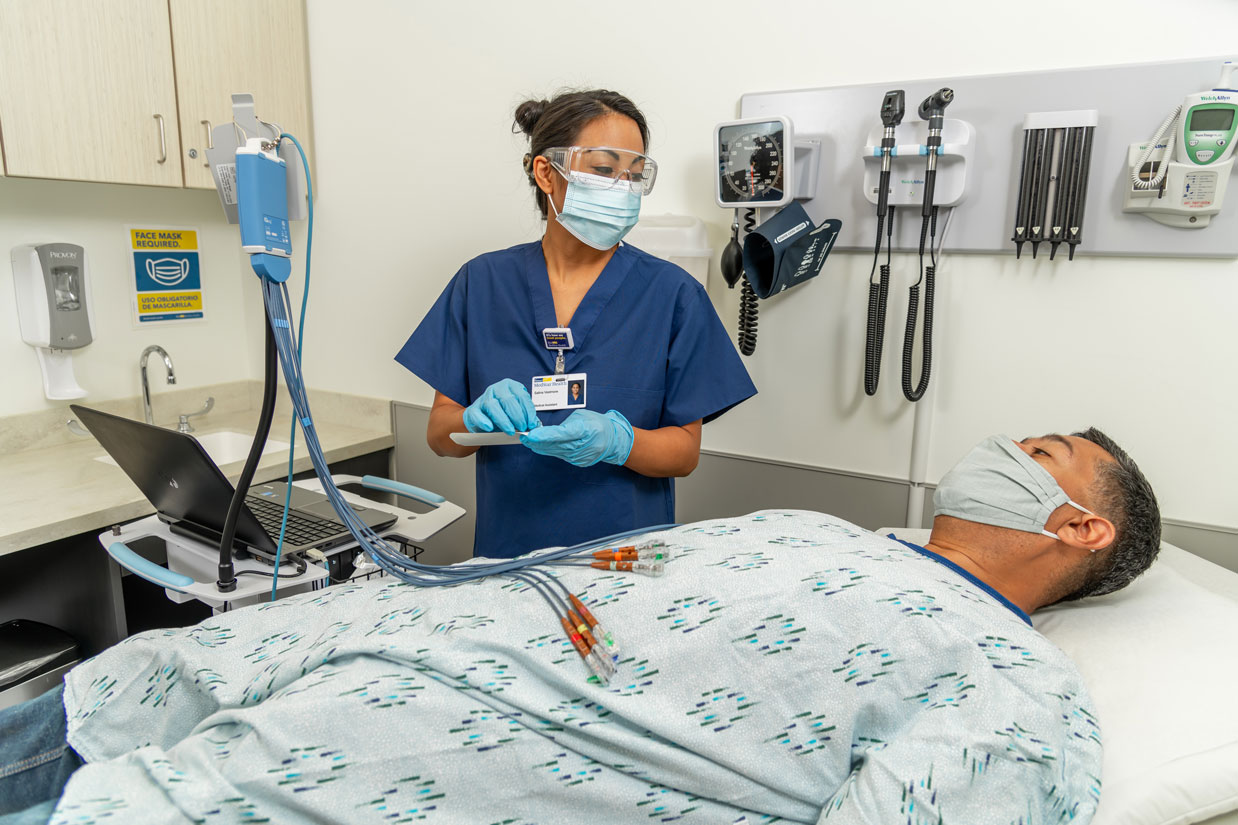Find care now
If you are experiencing a medical emergency, please call 911 or seek care at an emergency room.

During the pandemic, research has shown that patients with known cardiovascular disease are at an increased risk with COVID-19 and that COVID-19 can cause cardiac damage or thrombosis. Thrombosis (or blood clots) can cause a blockage of the flow of blood to the heart or other vital organs. This blood clot restricts the blood flow to the heart tissues and causes weakened heart muscles, irregular heartbeat and can often lead to a heart attack due to a poor supply of oxygen. There are multiple factors that contribute to the development of thrombosis in patients with COVID-19 such as acute critical illness, being bedridden, active infection or sepsis, underlying liver or kidney disease, or the presence of a malignancy.
Researchers from interventional cardiology at MedStar Washington Hospital Center evaluated the clinical impact of thrombosis in patients with COVID-19 over the span of the pandemic in a recent study, “Comparison of Outcomes in Patients With COVID-19 and Thrombosis Versus Those Without Thrombosis” published in The American Journal of Cardiology.
This study analyzed more than 11,000 patients with COVID-19 with a diagnosis of thrombosis who presented to a MedStar Health hospital during the pandemic. The research team compared the clinical course and outcomes based on the presence or absence of vascular (non-cardiac) thrombosis (blood clots in the veins) and then, specifically, the presence of cardiac thrombosis (blood clot in the heart). The study findings resulted in the following:
-
Of the patients included, 10% had noncardiac thrombotic events such as stroke, deep vein thrombosis, and pulmonary embolisms during their hospital admission and close to 9% of the population experienced cardiac thrombosis (myocardial infarction or heart attack).
-
Patients with non-cardiac thrombosis tended to have a higher rate of co-morbidities than patients with COVID-19 without thrombosis. However, the rate of co-morbidities in the non-cardiac thrombosis cohort was lower than in patients with COVID-19 with cardiac thrombosis, except for those with a history of stroke.
-
In-hospital mortality was significantly higher in patients with COVID-19 with non-cardiac thrombosis than in those without a thrombotic event.
-
Patients with COVID-19 with non-cardiac thrombosis required ventilation at a higher rate than patients with COVID-19 with cardiac thrombosis.
Throughout the course of the COVID-19 pandemic, treatment strategies have evolved significantly as the guidelines have changed and clinical knowledge is improved. One way to ensure a favorable outcome is rapid disease awareness and early admission of the patient to the hospital for treatment therapy. The study team’s analysis suggests that patients with COVID-19 with non-cardiac thrombosis are at higher risk for in-hospital mortality. However, this prognosis is not as grim as for patients with cardiac thrombosis. Continued efforts should focus on early recognition, evaluation, and intensifying care of these patients.
Lead by Ron Waksman, MD, Associate Director of the Division of Cardiology at MedStar Heart & Vascular Institute, the research team included Brian C. Case, MD; Jonathan Abramowitz, Corey Shea, Hank Rappaport, MD; Giorgio A Medranda, MD; Charan Yerasi, MD; Brian Forrestal, MD; Chava Chezar-Azerrad, MD; Cheng Zhang, Lowell Satler, MD; Itsik Ben-Dor, MD; Hayder Hashim, MD; Toby Rogers, MD; and William S. Weintraub, MD from the Department of Interventional Cardiology from MedStar Washington Hospital Center.
The American Journal of Cardiology, DOI: 10.1016/j.amjcard.2021.08.038














